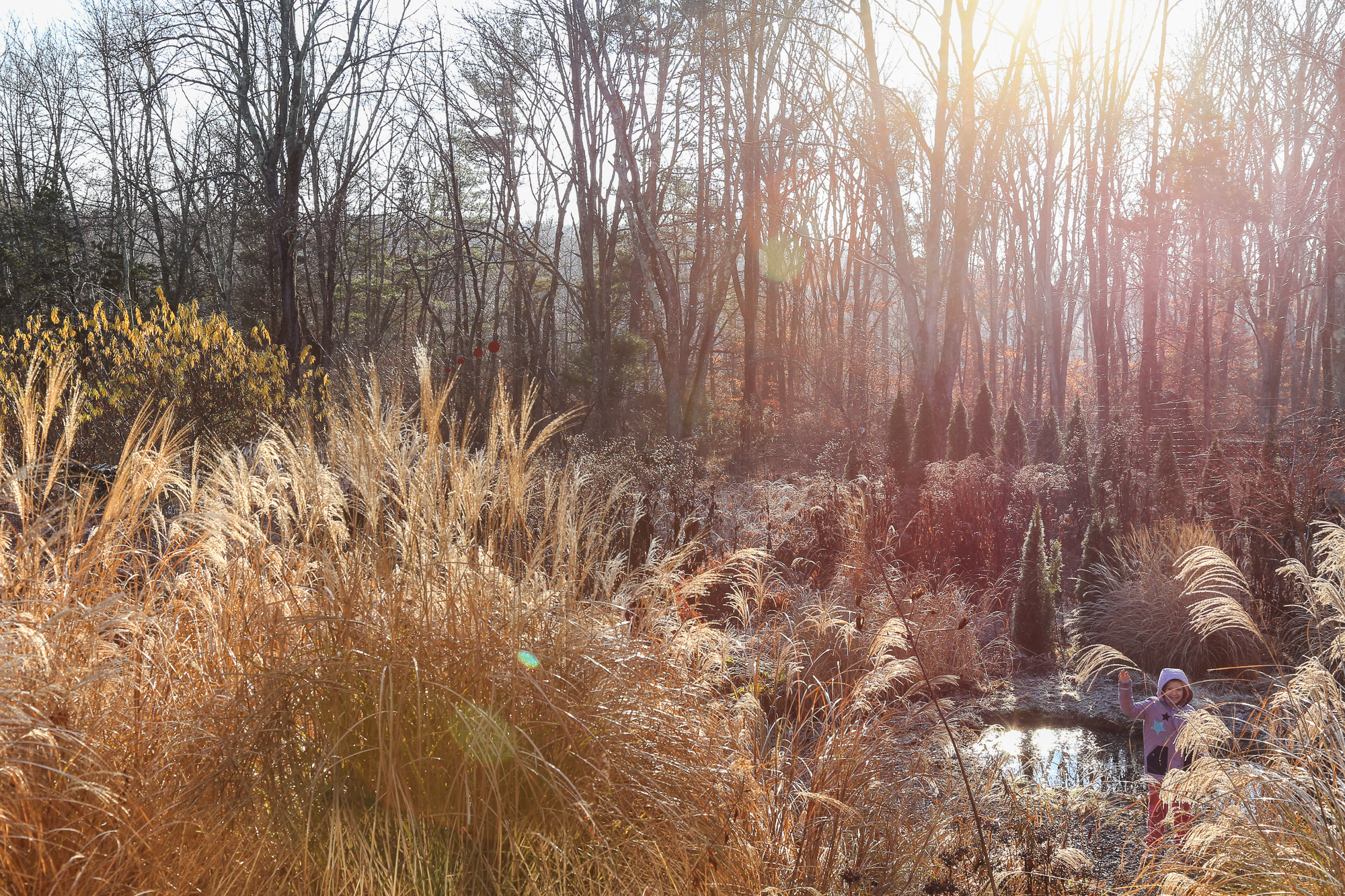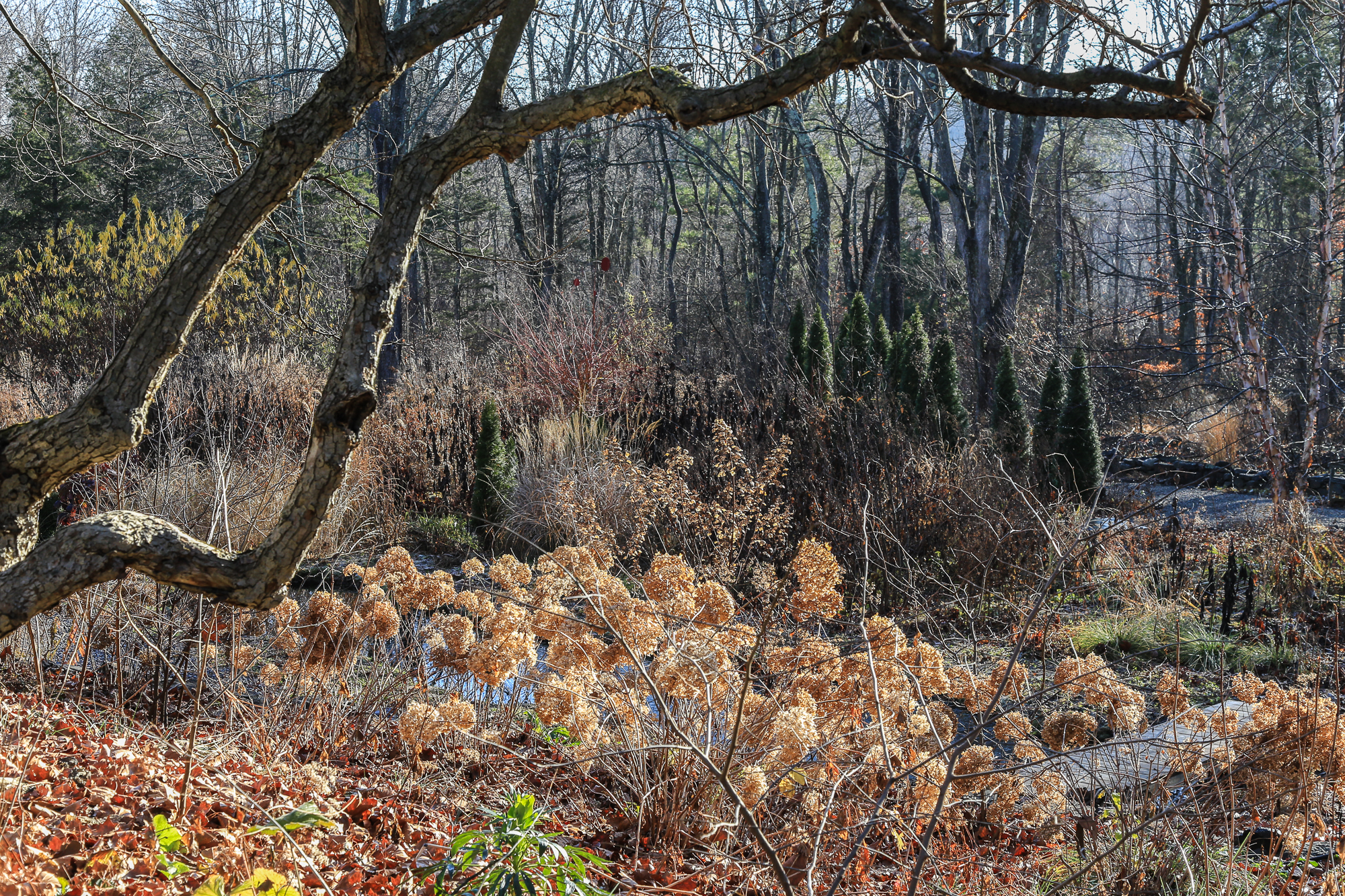Garden diary: remembering winter
We had a taste of it. On December 5, a little frost, a thin crust of ice on the pond. Later, a sunny day, the temperature moderated and it's been warm ever since. Now we're past the winter solstice, and still no winter.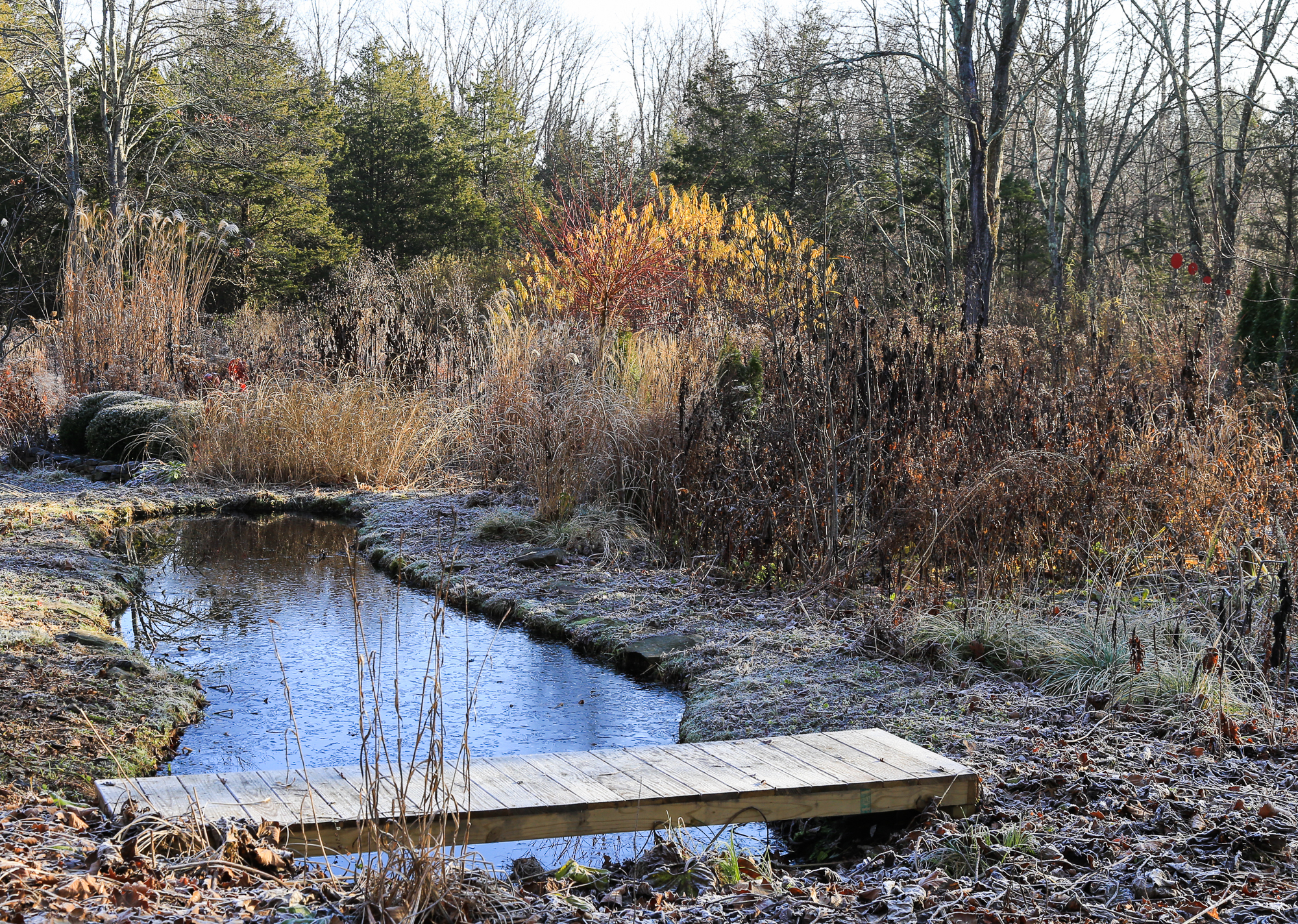 The canal pond is overgrown and cluttered by end of summer. I like to clear its edges before winter; a little more open space near the house prepares the way for a snowy entry. Next spring the bridge may have a wooden "stepping stones" added beyond the right end if I can find log circles, Black Locust preferred, to make a pathway across this jungle of Petasites.
The canal pond is overgrown and cluttered by end of summer. I like to clear its edges before winter; a little more open space near the house prepares the way for a snowy entry. Next spring the bridge may have a wooden "stepping stones" added beyond the right end if I can find log circles, Black Locust preferred, to make a pathway across this jungle of Petasites.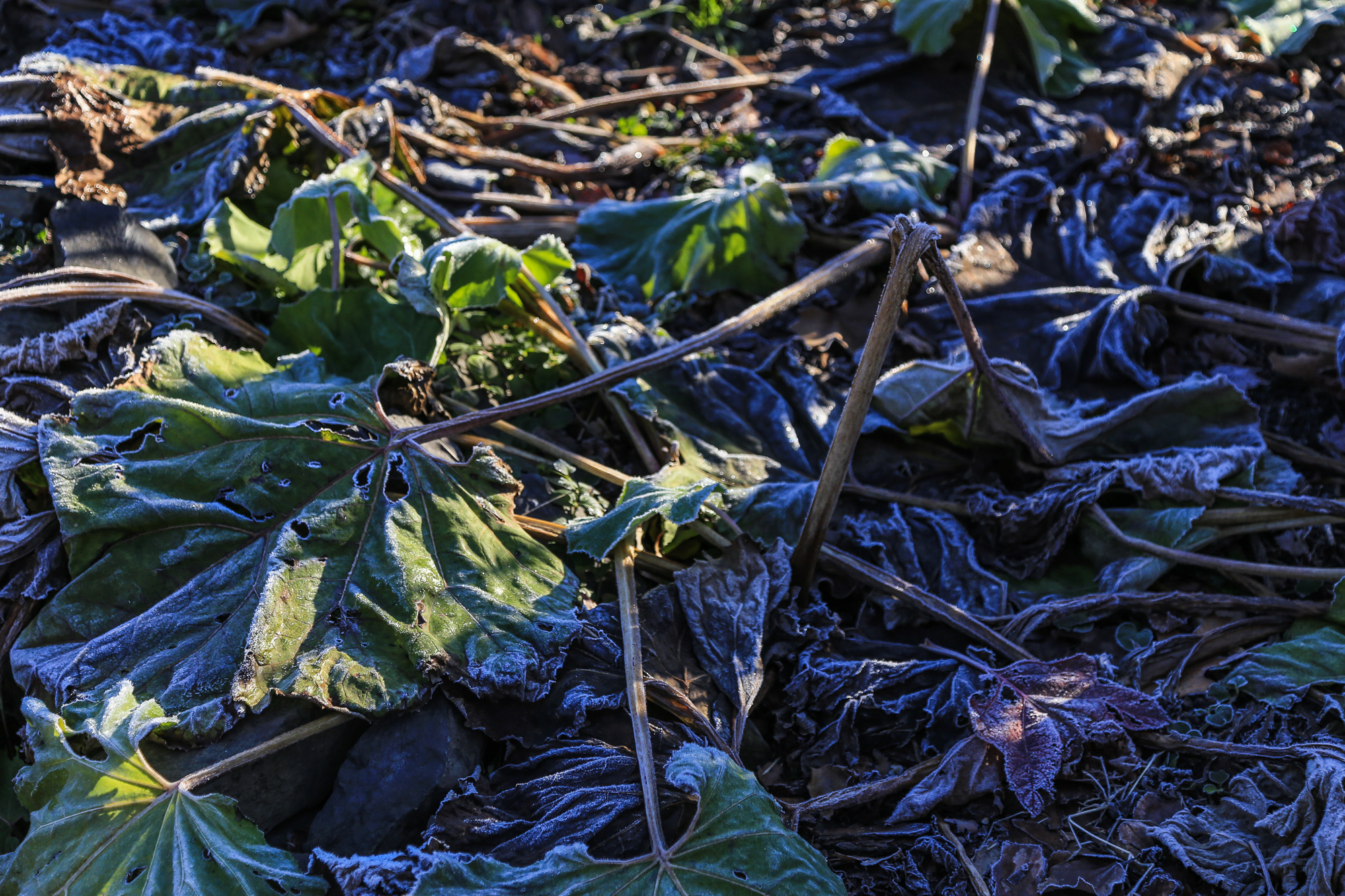 The geometry of frosted Petasites. Such a large, dramatic plant, it drops at first frost and dessicates so thoroughly there's almost nothing left by spring.
The geometry of frosted Petasites. Such a large, dramatic plant, it drops at first frost and dessicates so thoroughly there's almost nothing left by spring.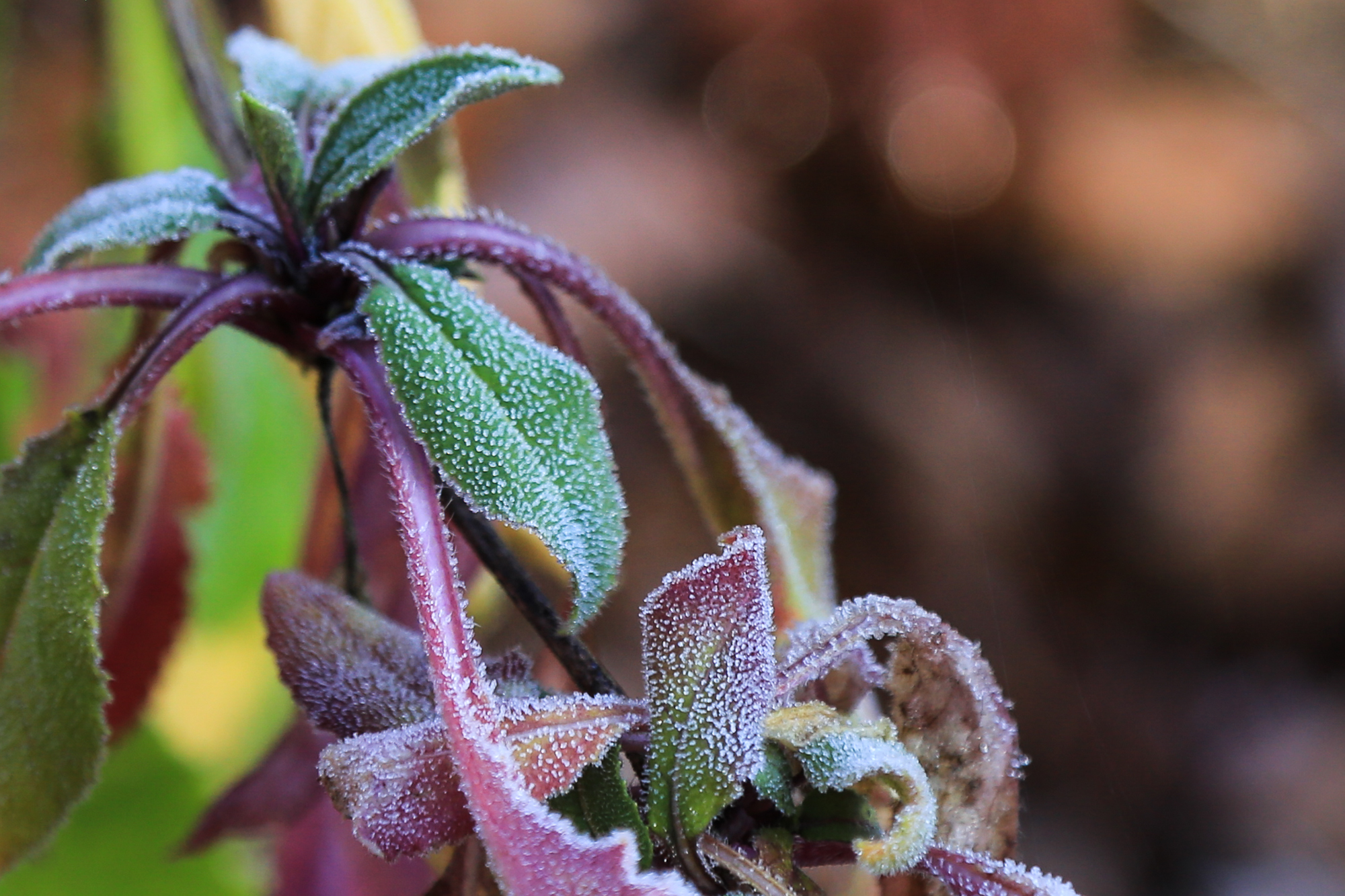 Dame's Rocket (Hesperis matronalis) stippled with ice.
Dame's Rocket (Hesperis matronalis) stippled with ice. The garden appears to rise up to the house.
The garden appears to rise up to the house.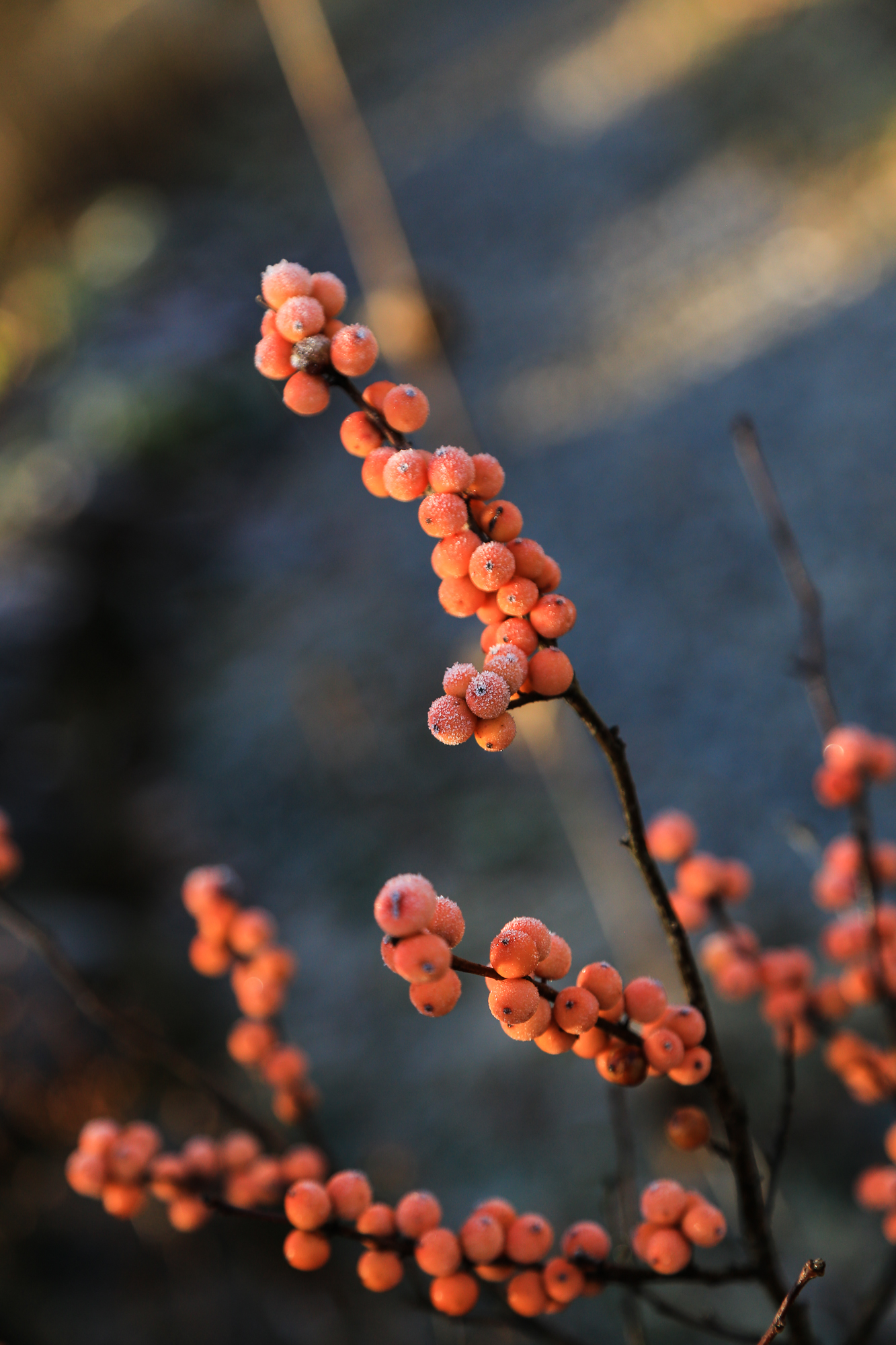 Ilex verticillata 'Winter Gold'.
Ilex verticillata 'Winter Gold'. The box 'caterpillar'.
The box 'caterpillar'.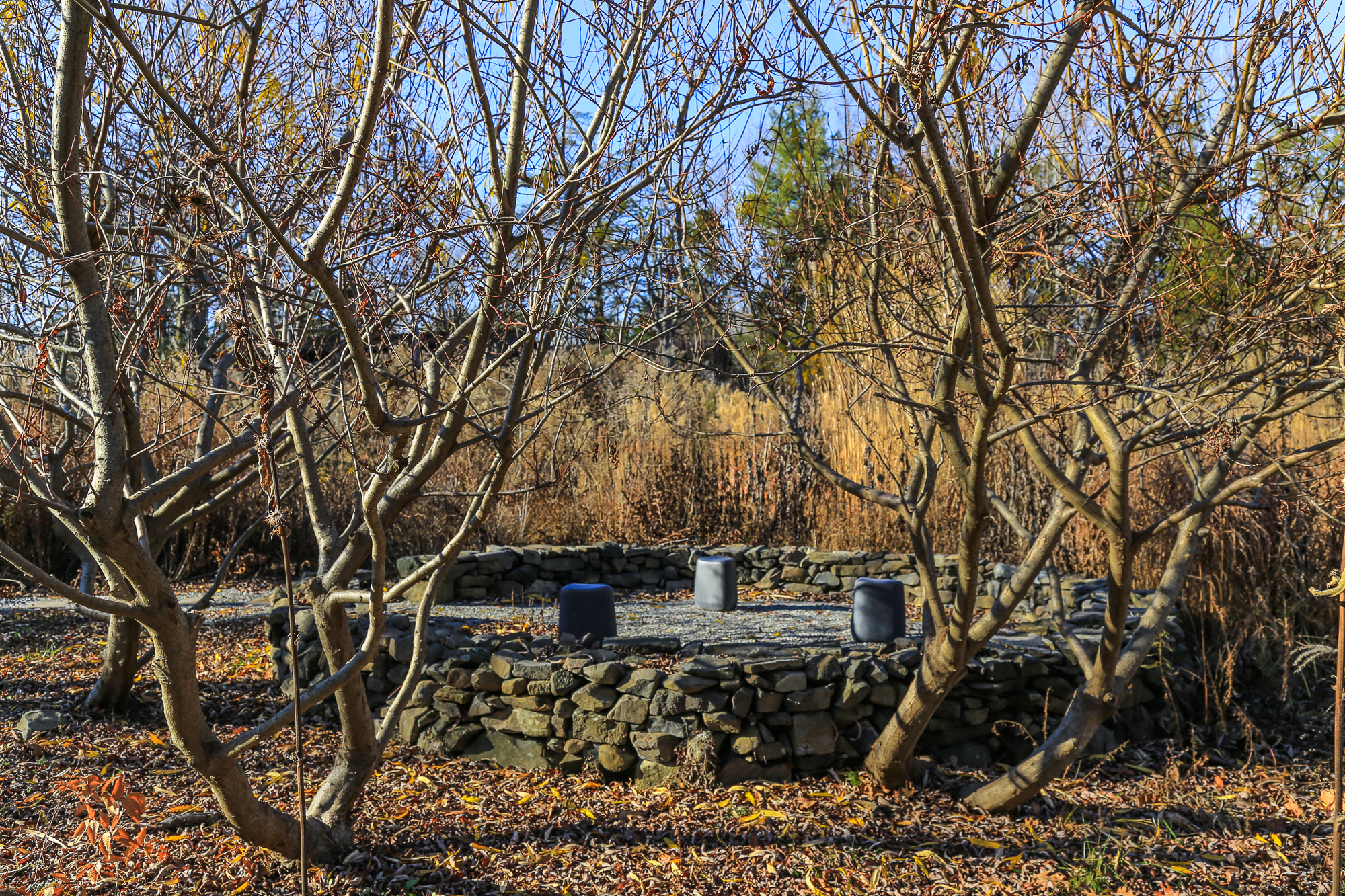 Stone circle with brawny trunks of Japanese Fantail willows (Salix sachalinensis 'Sekka').
Stone circle with brawny trunks of Japanese Fantail willows (Salix sachalinensis 'Sekka').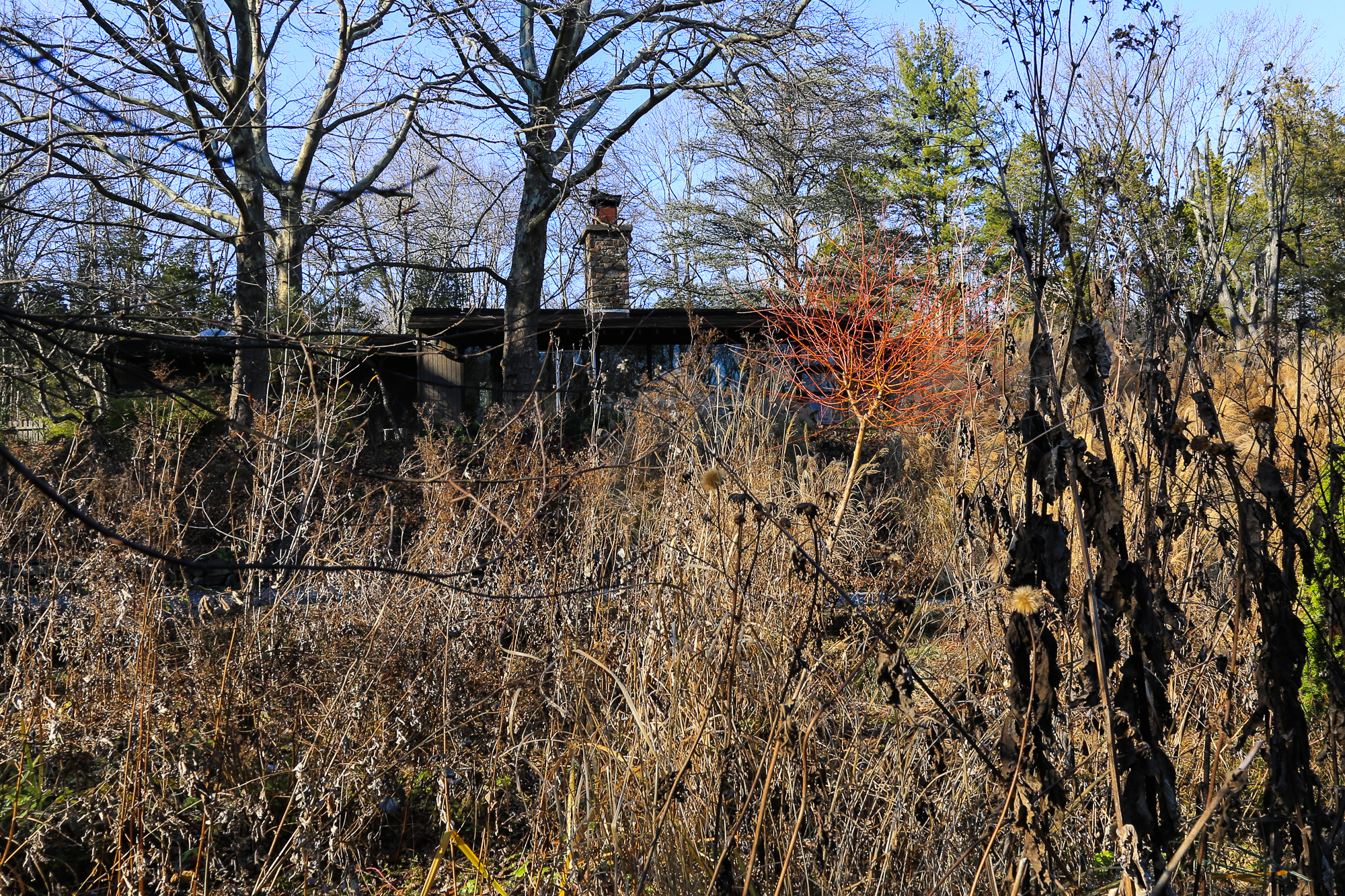 A pollarded willow, Salix alba 'Britzensis'. I'd like to have three or four (more?) in this area for winter color and structure. To give a sense of scale, its branches top out at about eight feet.
A pollarded willow, Salix alba 'Britzensis'. I'd like to have three or four (more?) in this area for winter color and structure. To give a sense of scale, its branches top out at about eight feet.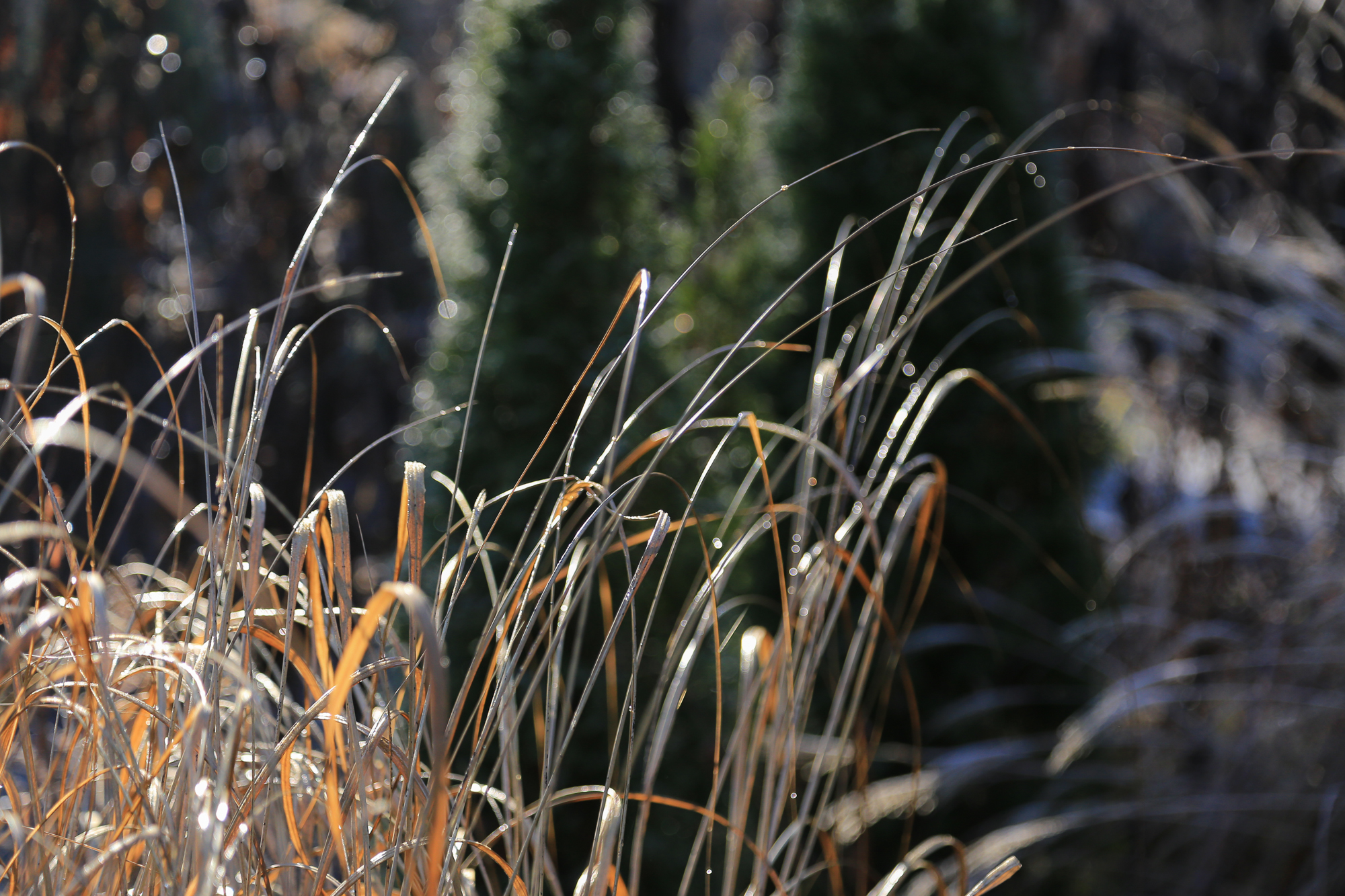 Graceful Prairie Cord Grass (Spartina pectinata 'Aureomarginata'), one of the few native grasses that thrives in my garden.
Graceful Prairie Cord Grass (Spartina pectinata 'Aureomarginata'), one of the few native grasses that thrives in my garden.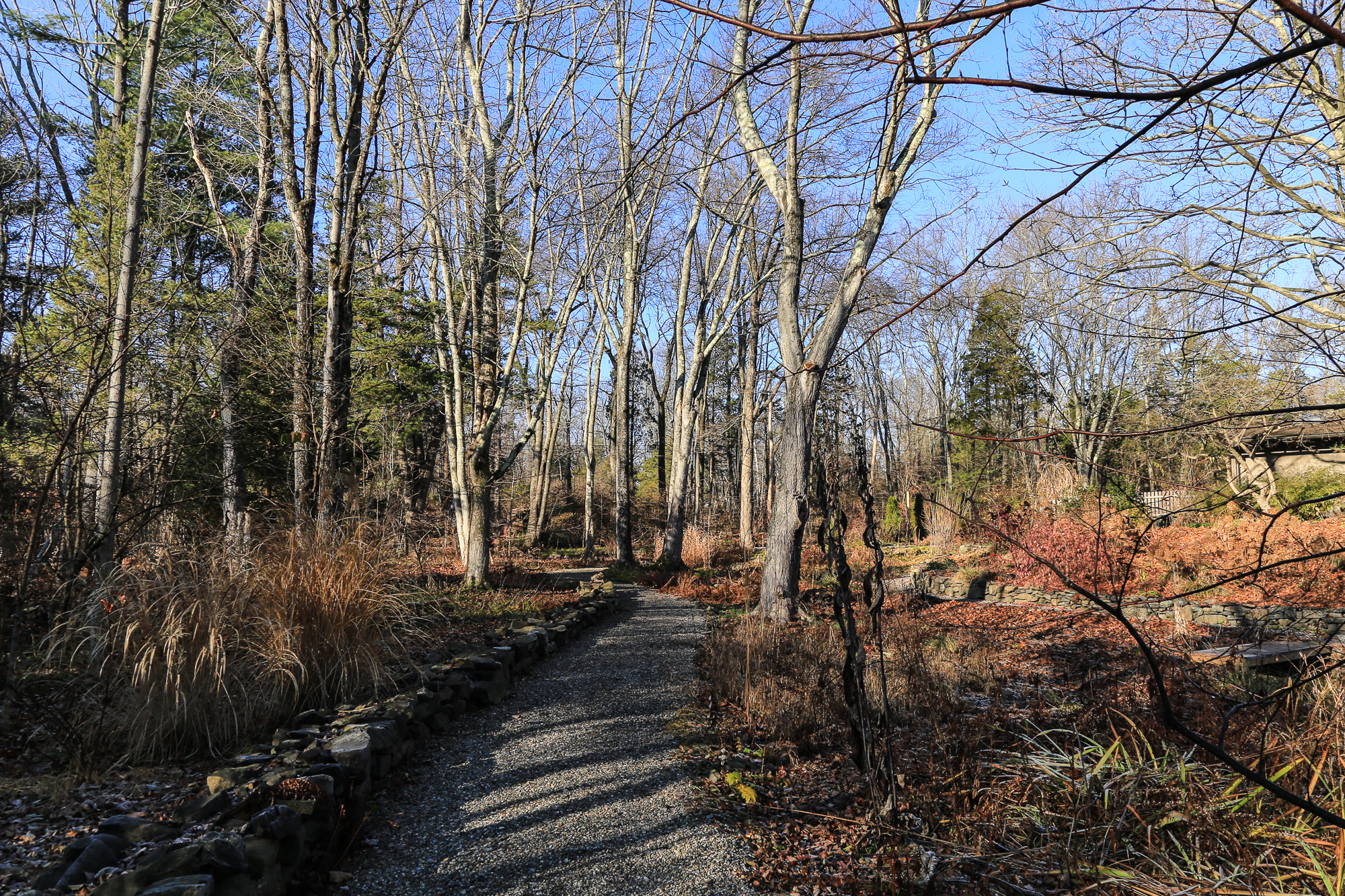 Toward the woodland garden at one end of the house.
Toward the woodland garden at one end of the house.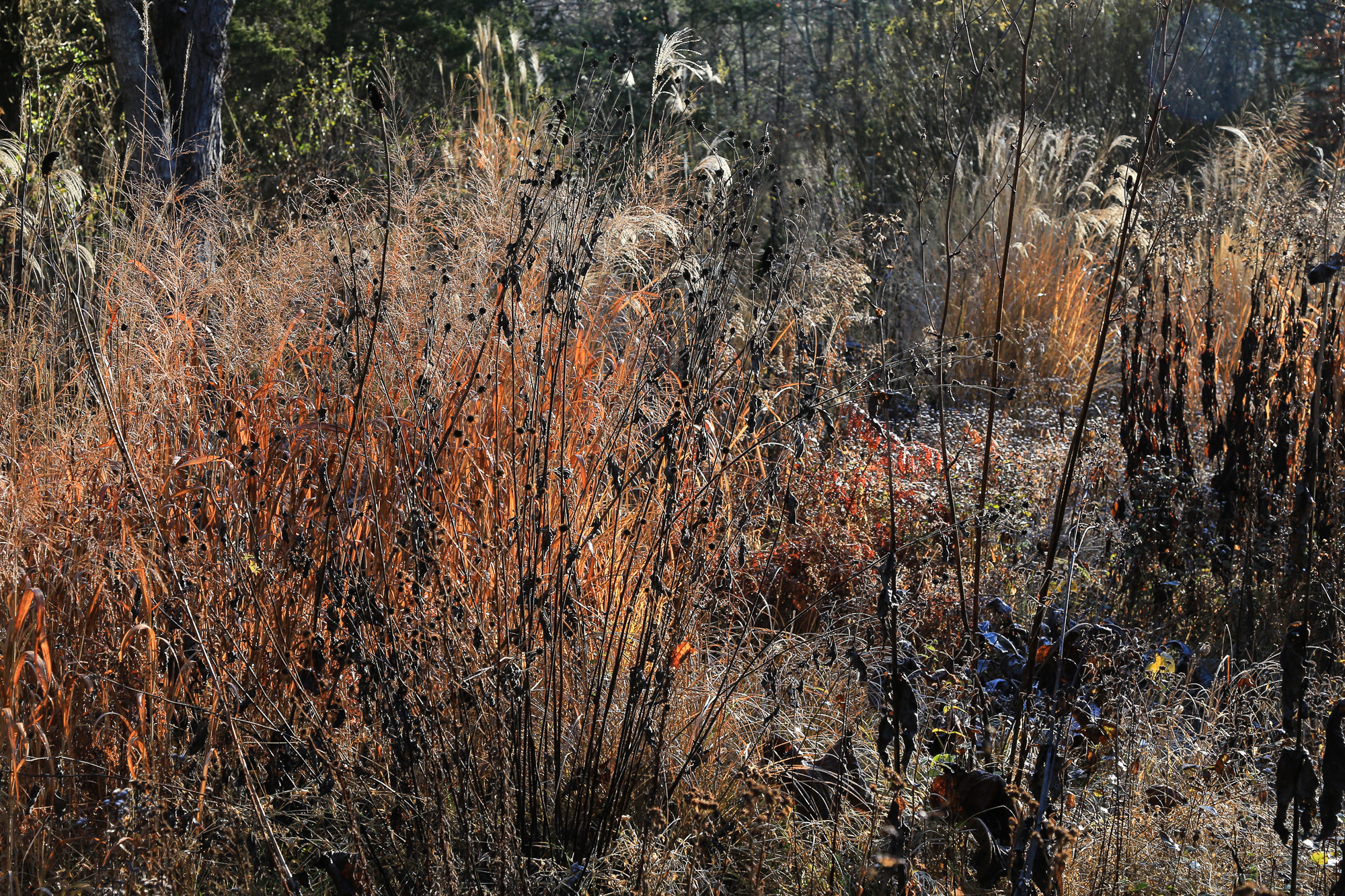 In autumn, I call this area of senescent grasses and blackening perennials the sunfield. Glowing grasses catch the light, transforming the dying perennials into sculptures of darkness.
In autumn, I call this area of senescent grasses and blackening perennials the sunfield. Glowing grasses catch the light, transforming the dying perennials into sculptures of darkness.

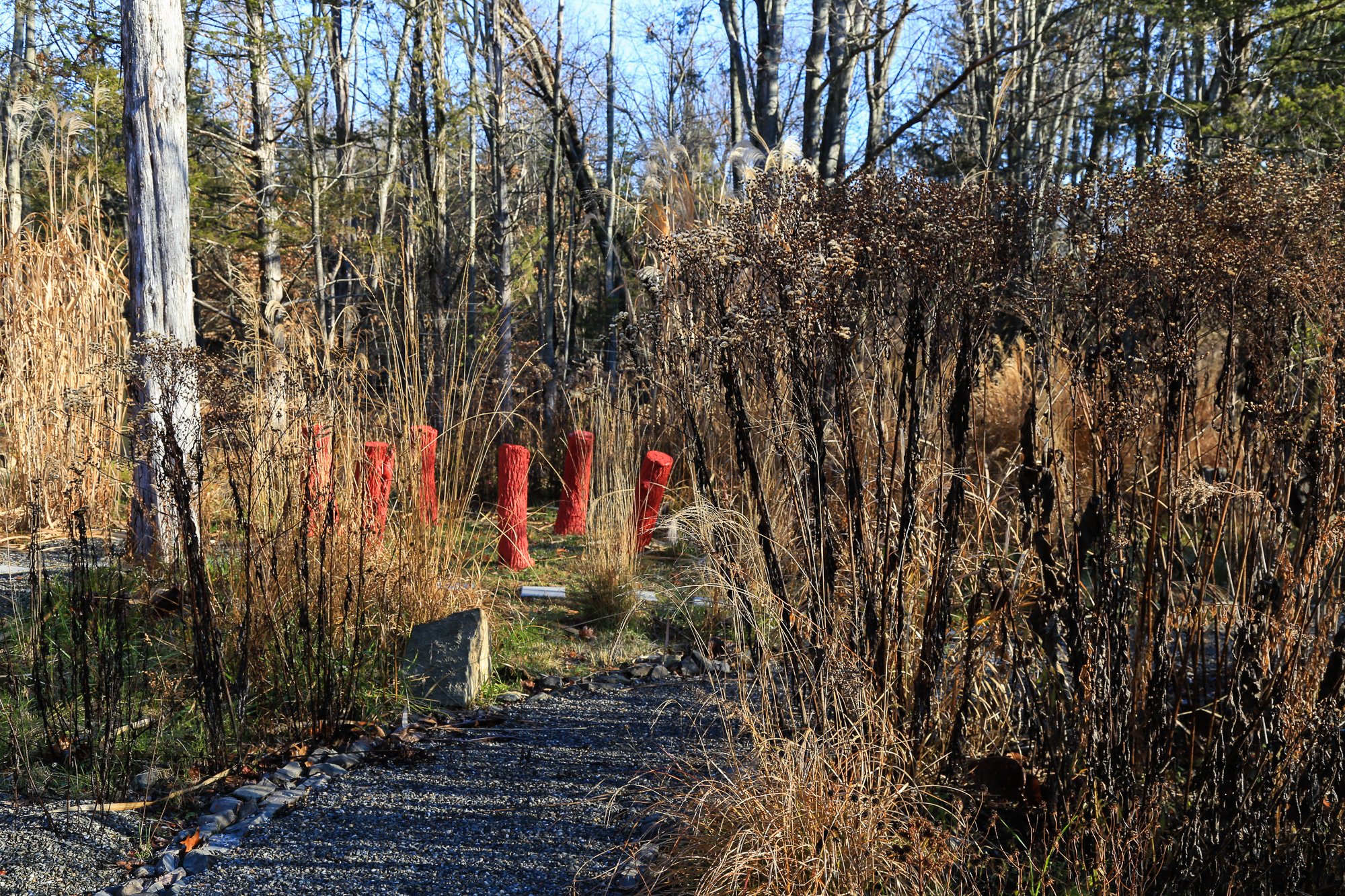 The circle of red logs, a reminder of process and order in a season of increasing disorder.
The circle of red logs, a reminder of process and order in a season of increasing disorder.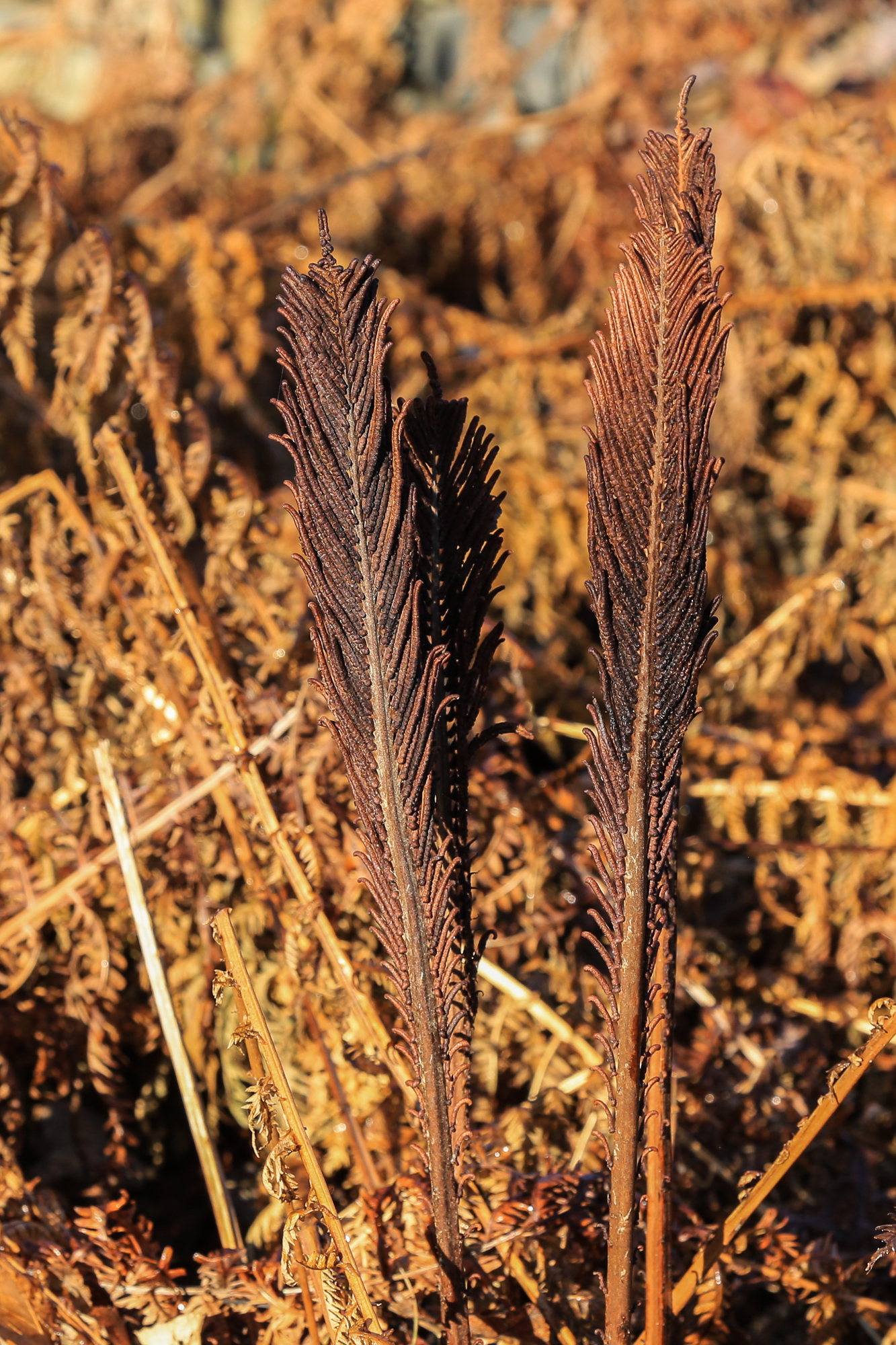 Fertile fronds of Matteuccia struthiopteris. In mass, these provide interest poking up through the snow (snow?).
Fertile fronds of Matteuccia struthiopteris. In mass, these provide interest poking up through the snow (snow?).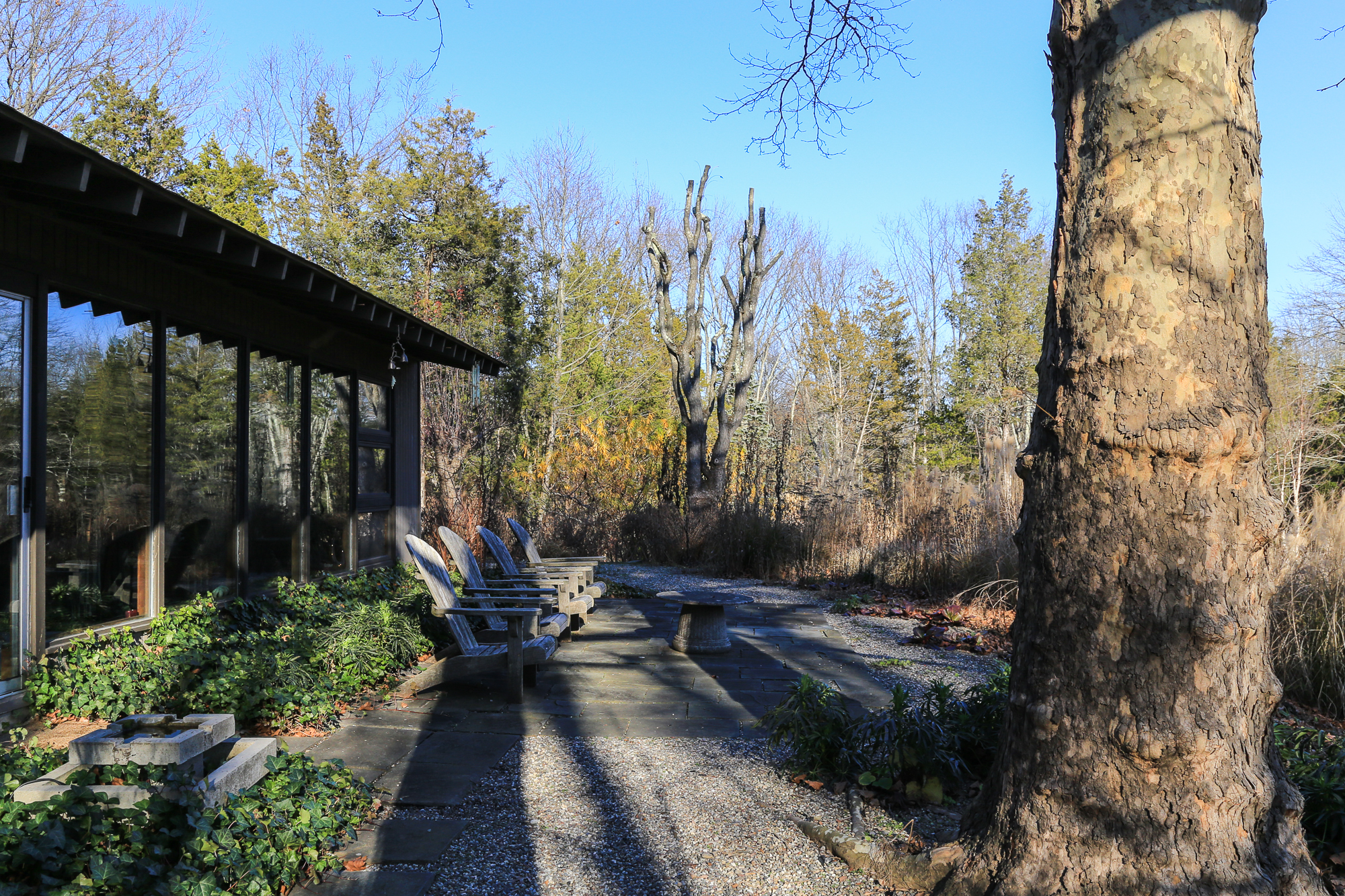 Back up to the house ...
Back up to the house ...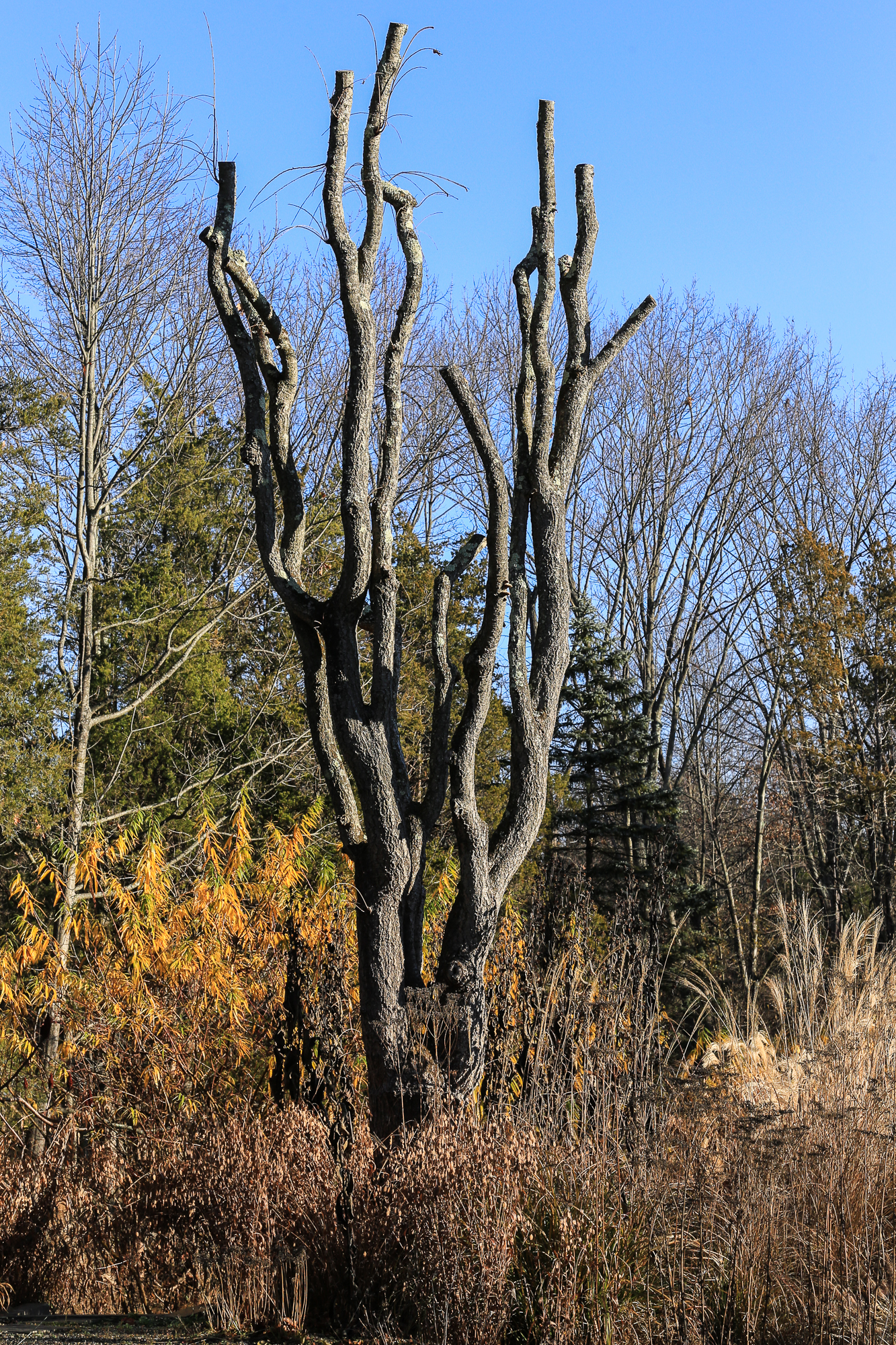 ... looking across ...
... looking across ... ... and out ...
... and out ...